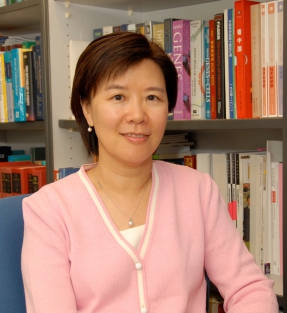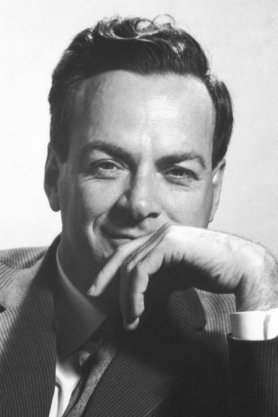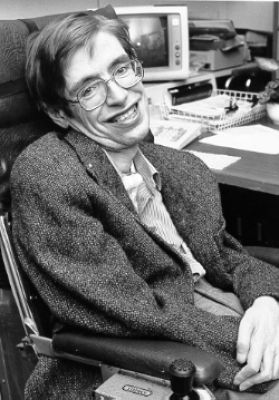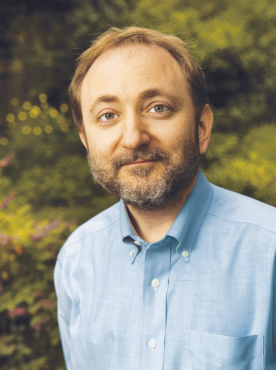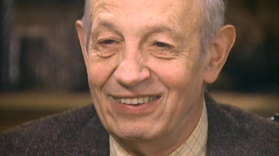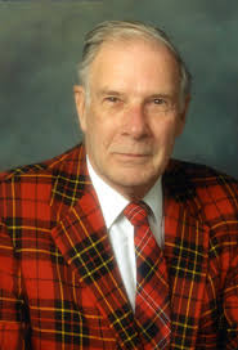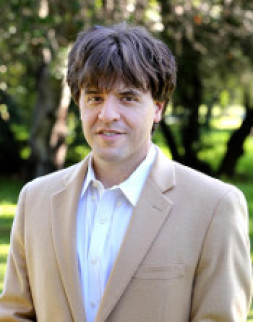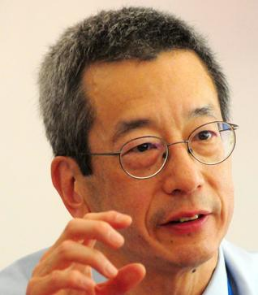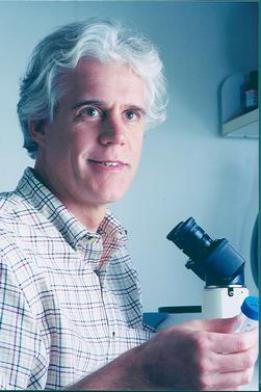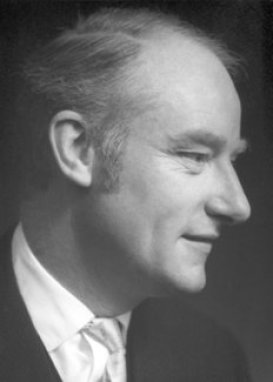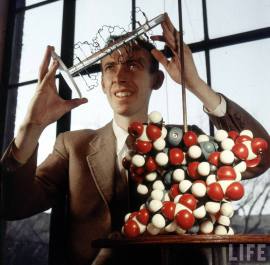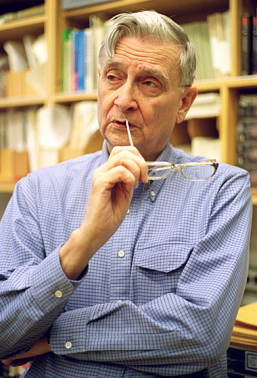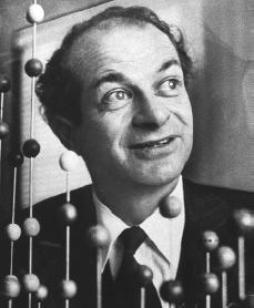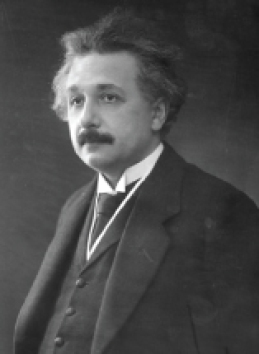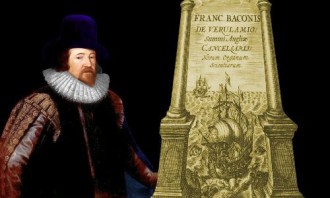Famous Scientists
Know them, learn from them
Scientists Highlight
Welcome to recommend your favorite scientists, please contact us at info@myacademia.org
Nancy Ip (葉玉如) is a renowned neuroscientist. She is currently the Vice-President of Research and Development, the Morningside Professor of Life Science, and Director of the State Key Laboratory of Molecular Neuroscience at The Hong Kong University of Science and Technology (HKUST). She received her Ph.D. degree in Pharmacology from Harvard Medical School, after which she held the position of Senior Staff Scientist at Regeneron Pharmaceuticals Inc. in New York. She is well known for her seminal discoveries in the biology of neurotrophic factors and has made important contributions towards understanding the molecular mechanisms underlying brain development and synaptic plasticity, and their dysregulation in neurological disorders. Ip’s recent research involves understanding how receptor tyrosine kinases and G-protein-coupled receptors modulate hippocampal synaptic plasticity. Her work reveals that the deregulation of these signaling pathways might underlie the synaptic dysfunctions observed during the progression of Alzheimer’s disease, highlighting the use of synaptic modulators as a potential therapeutic strategy. Research efforts are also directed at identifying drug leads for neurodegenerative diseases, for example from Chinese medicine. She has won numerous awards, including L'Oréal-UNESCO Awards for Women in Science (2004), Prize for Scientific and Technological Progress of Ho Leung Ho Lee Foundation (2008), Medal of Honor, Hong Kong SAR Government (2008), Chevalier de l'Ordre National du Merite, France (2011), Foreign Associate, US National Academy of Sciences (2016), and Foreign Honorary Member, American Academy of Arts and Sciences (2016).
Read more
Richard P. Feynman (1918-1988) was born in New York City. He studied at MIT for his B.Sc. in 1939 and at Princeton University for his Ph.D. in 1942. He was Research Assistant at Princeton (1940-1941), Professor of Theoretical Physics at Cornell University (1945-1950), Visiting Professor and thereafter appointed Professor of Theoretical Physics at the California Institute of Technology (1950-1959). He was the Richard Chace Tolman Professor of Theoretical Physics at the California Institute of Technology. He was a member of the American Physical Society, the American Association for the Advancement of Science; the National Academy of Science; in 1965 he was elected a foreign member of the Royal Society, London (Great Britain). He held the following awards: Albert Einstein Award (1954, Princeton); Einstein Award (Albert Einstein Award College of Medicine); Lawrence Award (1962), Nobel Prize (1965). -Edited from Noble Biographic.
Read more:
Scientist.Teacher.Raconteur.Musician.
What I cannot create, I do not understand.
I am a universe of atoms, an atom in the universe
The imagination of nature is far, far greater than the imagination of man
Stephen William Hawking
(8 January 1942 – 14 March 2018) -- The Beautiful Mind
Stephen Hawking was a British theoretical physicist, cosmologist, author, and Director of Research at the Centre for Theoretical Cosmology within the University of Cambridge. Hawking was an Honorary Fellow of the Royal Society of Arts (FRSA), a lifetime member of the Pontifical Academy of Sciences, and a recipient of the Presidential Medal of Freedom, the highest civilian award in the United States. In 2002, Hawking was ranked number 25 in the BBC's poll of the 100 Greatest Britons. He was the Lucasian Professor of Mathematics at the University of Cambridge between 1979 and 2009 and achieved commercial success with works of popular science in which he discusses his own theories and cosmology in general. His book A Brief History of Time appeared on the British Sunday Times best-seller list for a record-breaking 237 weeks. Hawking had a rare early-onset slow-progressing form of motor neuron disease (also known as amyotrophic lateral sclerosis "ALS" or Lou Gehrig's disease) that gradually paralyzed him over the decades. Even after the loss of his speech, he was still able to communicate through a speech-generating device, initially through the use of a hand-held switch, and eventually by using a single cheek muscle. He died on 14 March 2018 at the age of 76. (adapted from Wikipedia)
Read more: Stephen Hawking Facebook TED Talk
Quote:
Intelligence is the ability to adapt to change
Life would be tragic if it weren't funny
However difficult life may seem, there is always something you can do and succeed at
Andrew Zachary Fire is a Professor of Pathology and Genetics at Stanford University. He was awarded Nobel prize (Physiology and Medicine) in 2006 for his discovery of RNA interference, RANi. together with Craig C Mello.
Dr. Fire was born on April 27, 1959, in Palo Alto. After graduated from Fremont High School (Sunnyvale), he enrolled at the University of California at Berkeley receiving a BA degree in Mathematics and achieved a Ph.D. degree in biology at MIT. In 1998, Dr. Fire and his colleagues discovered that double-stranded RNA can effectively shut down specific genes through sequence-matched mRNA degradation. The Nobel Prize committee praised that "This year's Nobel Laureates have discovered a fundamental mechanism for controlling the flow of genetic information." His work revolutionizes the understanding of biological processes and gene regulation and brings new therapeutic approaches to modern medicine.
Read more:
John Forbes Nash Jr. (June 13, 1928– May 23, 2015) was an American mathematician who made fundamental contributions to game theory, differential geometry, and the study of partial differential equations. Nash's work has provided insight into the factors that govern chance and decision-making inside complex systems found in everyday life. His theories are widely used in economics. Serving as a Senior Research Mathematician at Princeton University during the latter part of his life, he shared the 1994 Nobel PPrize in Economics. In 2015, he also shared the Abel Prize for his work on nonlinear partial differential equations. On May 23, 2015, Nash and his wife, Alicia Nash, were killed in a car crash. ----Adapted from Wikipedia.
Read more:
1. NY Time ---The Lost Years of a Nobel Laureate
2. Video: Documentary
Richard Wesley Hamming (February 11, 1915 – January 7, 1998) was an American mathematician. Born in Chicago, Hamming attended the University of Chicago, the University of Nebraska, and the University of Illinois. In 1945 he joined the Manhattan Project at the Los Alamos Laboratory and then left for the Bell Telephone Laboratories in 1946. After retiring from the Bell Labs in 1976, Hamming took a position at the Naval Postgraduate School in Monterey, California where he devoted himself to teaching and writing books. He delivered his last lecture in December 1997, just a few weeks before he died from a heart attack on January 7, 1998. Hamming's work had many implications for computer engineering and telecommunications. His contributions include the Hamming code (which makes use of a Hamming matrix), the Hamming window, Hamming numbers, sphere-packing (orHamming bound), and the Hamming distance.
Read more:
2. Videos: CREATIVITY YOU and YOUR RESEARCH
"There is no simple formula for doing great science or engineering, I can only talk around
the topic. The topic is important because, so far as we have any solid evidence,
you have but one life to live"
Karl Deisseroth is the D. H. Chen Professor of Bioengineering and of Psychiatry and Behavioral Sciences at Stanford University. He earned his MD/Ph.D. in neuroscience from Stanford University in 1998. He established his lab at Stanford Univesity since 2004, and his team developed the technologies of CLARITY and optogenetics. He has been affiliated with the Howard Hughes Medical Institute (HHMI) since 2009. Dr. Deisseroth won numerous awards, including the 2005 NIH Pioneer Award,2012 Perl-UNC Neuroscience Prize, 2015 Albany Medical Center Prize, 2015 Lurie Prize in Biomedical Sciences, 2015 Breakthrough Prize in Life Sciences.
Deisseroth's lab
Deisseroth's talk on CLARITY
Deisseroth's talk on OPTIGENETICS
Roger Yonchien Tsien (Chinese: 錢永健) (born February 1, 1952) is an American biochemist. He is a professor at the Department of Chemistry and Biochemistry, University of California, San Diego and was awarded the 2008 Nobel Prize in chemistry "for his discovery and development of the green fluorescent protein (GFP) with two other chemists: Martin Chalfie of Columbia University and Osamu Shimomura of Boston University andMarine Biological Laboratory.
Tsien's Biography
Tsien's lab website
Roger Tsien: Bringing color to cell biology
A big loss to Science: Roger Tsien died on Aug 24, 2016, at age 64
Eric Olson, Ph.D. Professor & Chairman, Endowed TitleAnnie and Willie Nelson Professorship in Stem Cell Research; Pogue Distinguished Chair in Research on Cardiac Birth Defects; The Robert A. Welch Distinguished Chair in Science. Dr. Olson attended Wake Forest University, receiving a B.A. in chemistry and biology and a Ph.D. in biochemistry. He later received an honorary doctorate from his alma mater. After postdoctoral training at Washington University School of Medicine, he began his scientific career at M.D. Anderson Cancer Center. In 1995, he founded the Department of Molecular Biology at UT Southwestern. He is a member of the American Academy of Arts and Sciences, the U.S. National Academy of Sciences, and its Institute of Medicine. His awards include the Basic Research Prize, Research Achievement Award, and Inaugural Distinguished Scientist Award from the American Heart Association, the Pasarow Award, the Pollin Prize in Pediatric Research, and the Medal of Merit from the International Academy of Cardiovascular Sciences. In 2009, the French Academy of Science awarded Dr. Olson the Fondation Lefoulon-Delalande Grand Prize. He is the 2012 recipient of the Passano Award and the Steven C. Beering Award.
Olson's research laboratory
Olson's life and science contribution read more
Francis Harry Compton Crick (1916-2004) was born on June 8th, 1916, at Northampton, England, being the elder child of Harry Crick and Annie Elizabeth Wilkins. Francis Crick, together with James Watson, revealed the double helix of deoxyribonucleic acid (DNA) in 1953, which was considered the most significant advance in the understanding of biology since Darwin's theory of evolution. Yet, during a research career spanning more than fifty years, theoretical biologist Crick also made fundamental contributions to structural studies of other important biological molecules through X-ray analysis; to the understanding of protein synthesis; to the deciphering of the genetic code by which hereditary information is stored and transcribed in the cell; and to our conception of consciousness.
Read more: Wikipedia Profile in Science Biography
Crick's quote
To produce a really good biological theory one must try to see through the clutter produced by evolution to the basic mechanisms lying beneath them, realizing that they are likely to be overlaid by other, secondary mechanisms. What seems to physicists to be a hopelessly complicated process may have been what nature found simplest, because nature could only build on what was already there.
James Dewey Watson was an American geneticist and biophysicist. Noted for his decisive work in the discovery of the molecular structure of DNA, the hereditary material associated with the transmission of genetic information. He shared the Nobel Prize for Physiology or Medicine with Francis Crick and Maurice Wilkins in 1962. Dr. Watson is also the author for several books, such as, "The Double Helix: A Personal Account of the Discovery of the Structure of DNA" and "the secret of life".
Watson's Biography
Watson's life and science contribution read more, and more
Watson's quote:
I think the reason people are dealing with science less well now than 50 years ago is that is has become so complicated
Edward Osborne Wilson, more commonly known as E. O. Wilson, is an American biologist who is widely considered to be the world’s leading authority on ants. One of the leading figures in sociobiology, he is often dubbed as “the father of sociobiology”. A notable author and researcher, Wilson won the Pulitzer Prize twice. He is also noted for his environmental advocacy, and his secular-humanist and deist ideas related to religious and ethical subjects.
Read more
Wilson's Biodiversity Foundation
Wilson's Advice to young scientists
Wilson's quote:
Sometimes a concept is baffling not because it is profound but because it is wrong
Linus Pauling was an American theoretical physical chemist and activist. He remains one of the greatest chemists ever, and the only person in history to be awarded two unshared Nobel Prizes; in 1954 for studying the nature of the chemical bond, and in 1962 for his efforts regarding the prohibition of nuclear testing. His contributions to quantum chemistry and molecular biology are considered revolutionary and created a universal impact.
Pauline's Biography
Pauline's profile in science
Pauline's quote:
The best way to have a good idea is to have a lot of ideas
Albert Einstein was a German-born physicist who developed the general theory of relativity, among other feats. Albert Einstein rewrote the laws of nature. He completely changed the way we understand the behavior of things as basic as light, gravity, and time. Born in Ulm, Württemberg, Germany in 1879, Albert Einstein had a passion for inquiry that eventually led him to develop the special and general theories of relativity. In 1921, he won the Nobel Prize for physics for his explanation of the photoelectric effect and immigrated to the U.S. in the following decade after being targeted by the Nazis. Einstein is generally considered the most influential physicist of the 20th century, with his work also having a major impact on the development of atomic energy. With a focus on unified field theory during his later years, Einstein died on April 18, 1955, in Princeton, New Jersey.
Einstein's Biography
Einstein's life and science contribution read more and more
Einstein's quote:
The most beautiful thing we can experience is the mysterious. It is the source of all true art and science
Imagination is more important than knowledge
If you can not explain it simply, you do not understand it well enough
Two things are infinite: the universe and human stupidity; and I am not sure about the universe.
Francis Bacon was born on January 22, 1561, in London, England. Bacon served as attorney general and Lord Chancellor of England, resigning amid charges of corruption. His more valuable work was philosophical. Bacon took up Aristotelian ideas, arguing for an empirical, inductive approach, known as the scientific method, which is the foundation of modern scientific inquiry.
Bacon's Biography
Bacon's life and science contribution read more
Bacon's quote:
Knowledge is power
A wise man will make more opportunities than he finds


